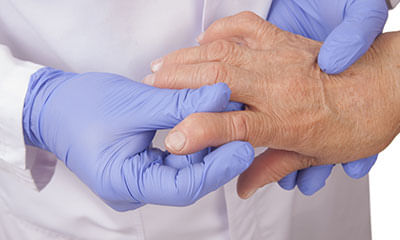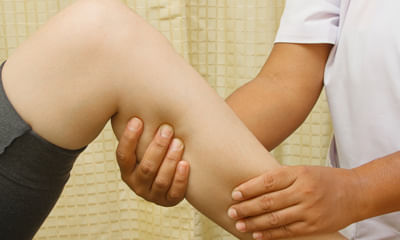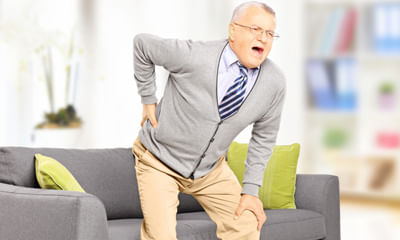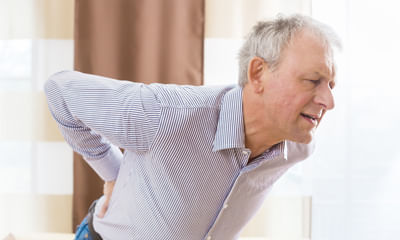Slipped Disc Treatment Without Surgery
Hi, I am 23 years old male, I have herniation of disc in both cervical and lumbar spine, the pain is getting worse day b ...
Ask Free Question
You are just 23 years don't go for surgery, it won't help you for too long. Physiotherapy is the only best treatment for this problem. Depends how well you are doing your exercises. Also every doctor is not same and the treatment style changes with different doctors. Your reports and a video examination is required for perfect diagnosis and right treatment. I am not telling you any exercises as I know it won't help much in this way before proper examination. If you want you can take online consultation for proper exercises program for your condition accordingly. You can also discuss your case with me.
My mri report: diffuse disk bulge are seen at l3 -4 and l4-5 levels with indentation of the these sac and obliteration o ...
Ask Free Question
Treatment depends upon your clinical examination. Most of the times disc herniation can be managed by conservative treatment like exercises, physiotherapy and medications. Sometimes nerve block or surgery may be required.
I have slip disc since 2017. Maine surgery bhi karwaya 2017 me. Lekin mujhe tab se abhi tak leg and back me pain hai. Or ...
Ask Free Question
What is your ge? Below are exercises that strengthen the lower back and help manage lower back pain: 1. Bridges—lie on the ground and bend the knees, placing the feet flat on the floor hip-width apart. Press the feet into the floor, keeping the arms by the sides. Raise the buttocks off the ground until the body forms a straight line from the shoulders to the knees. Squeeze the buttocks with the shoulders remaining on the floor. Lower the buttocks to the ground and rest for a few seconds.Repeat 15 times and then rest for 1 minute.Do 3 sets of 15 repetitions.2. Knee-to-chest stretches— lie on the back on the floor. Bend the knees, keeping both feet flat on the floor. Use both hands to pull one knee in toward the chest. Hold the knee against the chest for 5 seconds, keeping the abdominals tight and pressing the spine into the floor. Return to the starting position. Repeat with the opposite leg. Repeat with each leg 2–3 times twice a day. 3. Lower back rotational stretches—lie back on the floor with bent knees and feet flat on the ground. Keeping the shoulders firmly on the floor, gently roll both bent knees over to one side. Hold the position for 5–10 seconds. Return to the starting position. Gently roll the bent knees over to the opposite side, hold, and then return to the starting position. Repeat 2–3 times on each side twice a day. 4. Draw-in maneuvers— lie back on the floor with knees bent and feet flat, keeping the arms by the sides. Breathe in deeply. While breathing out, pull the bellybutton toward the spine, tightening the abdominal muscles and keeping the hips still. Hold the position for 5 seconds. Repeat 5 times. 5. Pelvic tilts— lie back on the floor with knees bent and feet flat, keeping the arms by the sides. Gently arch the lower back and push the stomach out. Hold for 5 seconds, then relax. Flatten the back and pull the bellybutton in toward the floor. Hold for 5 seconds, then relax. Increase the number of repetitions daily, building up to 30. 6. Lying lateral leg lifts— lie on one side with the legs together. Keep the lower leg slightly bent. Draw the bellybutton into the spine to engage the core muscles. Raise the top leg about 18 inches, keeping it straight and extended. Hold the position for 2 seconds. Repeat 10 times. Turn onto the other side of the body and repeat, lifting the other leg. Perform 3 sets on each side. 7. Cat stretches— get onto the hands and knees with the knees hip-width apart. Arch the back, pulling the bellybutton up toward the spine. Slowly relax the muscles and allow the abdomen to sag toward the floor. Return to the starting position. Repeat 3–5 times twice a day. 8. Supermans— lie face down on the ground and stretch both arms out in front of the body, keeping the legs stretched out and flat on the ground. Raise both the hands and feet, aiming to create a gap of about 6 inches between them and the floor. Try to pull in the bellybutton, lifting it off the floor to engage the core muscles. Keep the head straight and look at the floor to avoid neck injury. Stretch the hands and feet outward as far as possible. Hold the position for 2 seconds. Return to the starting position. Repeat 10 times. For this homeopathic treatment is very effective for more details you can consult me.
Hello. My husband is suffering from arthritis. He has slip disc problem also. L4,l5, and s1. Doctor has consulted to do ...
Ask Free Question
Hello, please do not go through surgery, in this condition best possible treatment is panchkarma, along with ayurvedic medicines, this condition is curable, so consult ayurvedic physician first.
My weight is 86 kg and height is 171 cm. I am suffering from mild slip disc with insufficiency of calcium & vitamin d. P ...
Ask Free Question
A 'slipped' (prolapsed) disc often causes sudden, severe lower back pain. The disc often presses on a nerve root which can cause pain and other symptoms in a leg. In most cases, the symptoms ease off gradually over several weeks. The usual advice is to carry on as normal as much as possible. Painkillers may help. Physical treatments such as spinal manipulation may also help. Surgery may be an option if the symptoms persist.
I have muscle related problem, where my back muscles shrink and expand often. I 'm observing this everyday. It's been a ...
Ask Free Question
Muscle atrophy is the wasting or loss of muscle tissue that is used for movement (skeletal muscles). Although people can adapt to muscle atrophy, even minor muscle atrophy causes some loss of movement or strength. There are three types of muscle atrophy: physiologic, pathologic, and neurogenic. Neurogenic muscle atrophy is the most severe type of muscle atrophy. Neurogenic muscle atrophy can be from an injury to, or disease of a nerve that connects to the muscle. Neurogenic muscle atrophy tends to occur more suddenly than physiologic muscle atrophy. Treatment may involve: exercises and equipment to help with movement and breathing feeding tubes and diet advice braces or surgery to treat problems with the spine or joints.
I'm 175 cm 92 kg female. I carried a very heavy box and felt pain, electric on my right whole leg. I have consulted orth ...
Ask Free Question
I wonder why not they suggested you to take physiotherapy treatment from a qualified physiotherapist? I am amazed. Please take it immediately after consulting a qualified physiotherapist specialised in back pain or spine treatment. 97% of slipped disc doesn't require surgery. Acute slipped disc never needs" surgery"it needs rest and physiotherapy. Good luck!
I have slip disc in l5-s1 and the gap is just 8 mm left .this condition is continuously from 4 years .can it be treated ...
Ask Free Question
Physiotherapy gives a good relief but it cannot be cure by it. Fir that take proper homoeopathic treatment with physiotherapy. Don't go for surgery as it is very risky.
Diffuse annular bulge with posterior annular tear and posterior disc protrusions at l4-5 and l5-s1 levels impinging upon ...
Ask Free Question
Because the annulus has such a limited blood supply, annular tears can take quite a long time to heal on its own — 18 months to two years. The majority of doctors will start with a conservative approach to treatment, prescribing anti-inflammatory medication to relieve the pressure and possibly steroid injections to alleviate the pain. Regular physiotherapy treatments, spinal traction therapy, and physical therapy can also bring relief to individuals suffering from annular tears. if these conservative treatments are not effective, then surgical treatment may be necessary. Annular tears can be sealed off with a laser procedure to prevent any further injury. Or, a minimally invasive procedure called an endoscopic discectomy can be effective if there’s a painful loose disc fragment in an annular tear. In more severe cases, disc replacement or spinal fusion surgery can replace a damaged disc. There are also some highly advanced treatment options that are in development. For example, using a patient’s stem cells to regenerate their annular fibres. However, these treatments are only used on a case by case basis. If you are experiencing back pain that isn’t getting better with rest and a decrease in activity, then you should see your orthopaedician. Severe annular tears, when left untreated, can lead to more painful conditions, such as a herniated disc. A good treatment plan can relieve your discomfort, return you to your preferred level of activity, and keep your back healthy and pain-free.
I have problem in slip disc (spine), from last 10 months. Unable to walk more than 10 minutes, unable to stand more than ...
Ask Free Question
If you don't want surgery then your treatment can be done with interventional pain procedure and medication.







